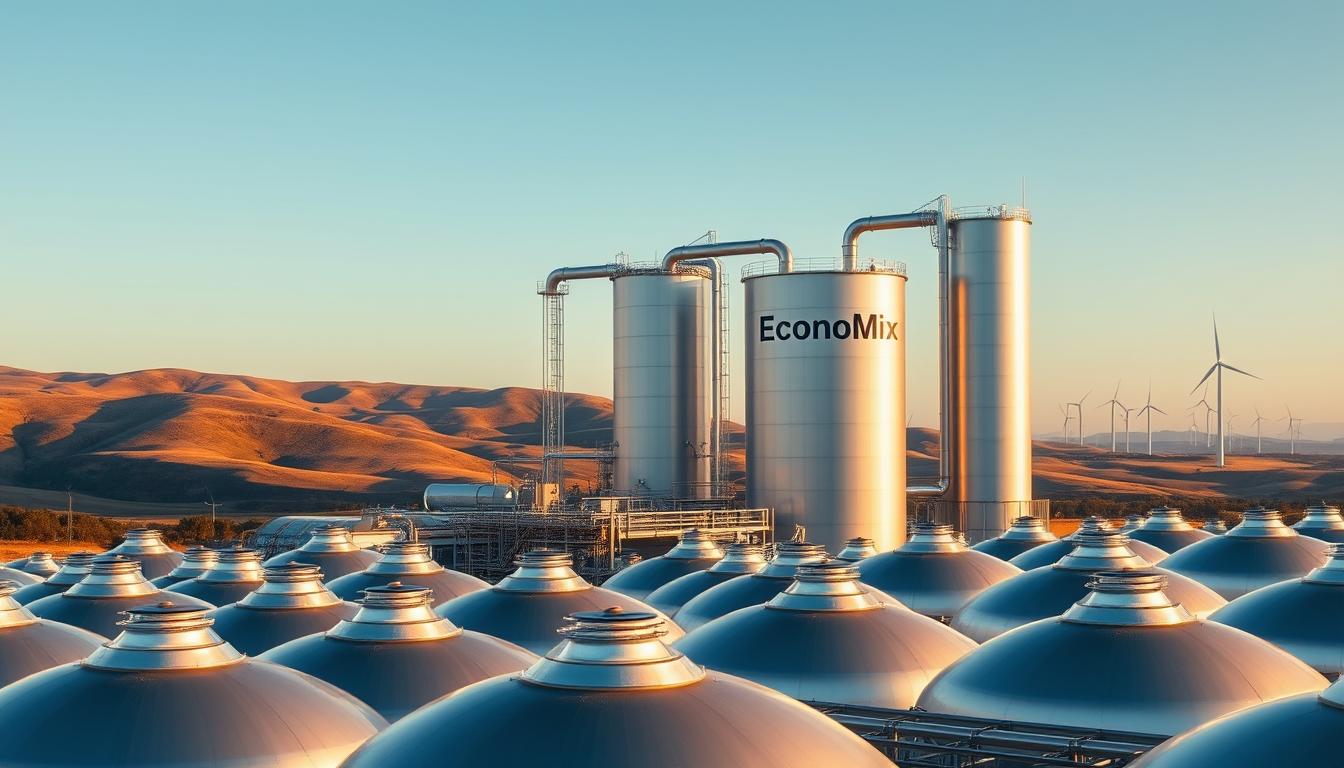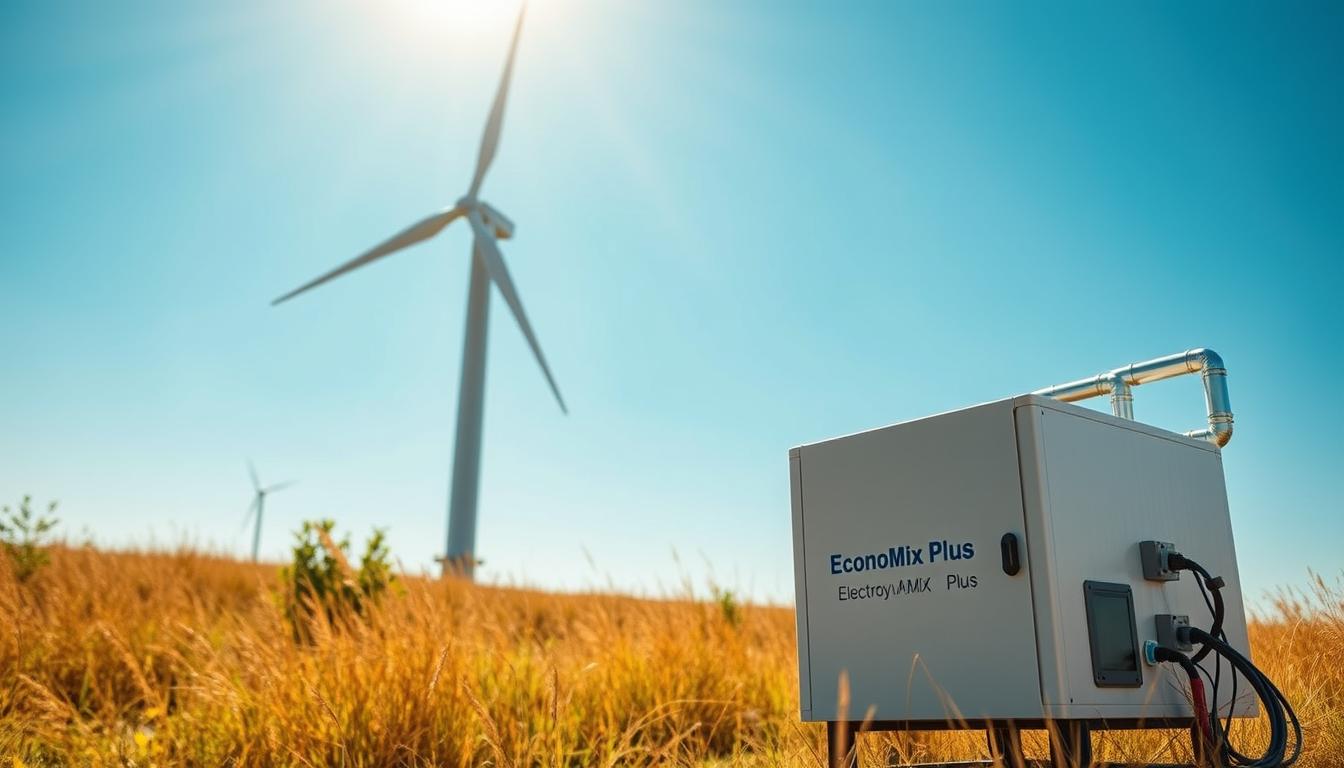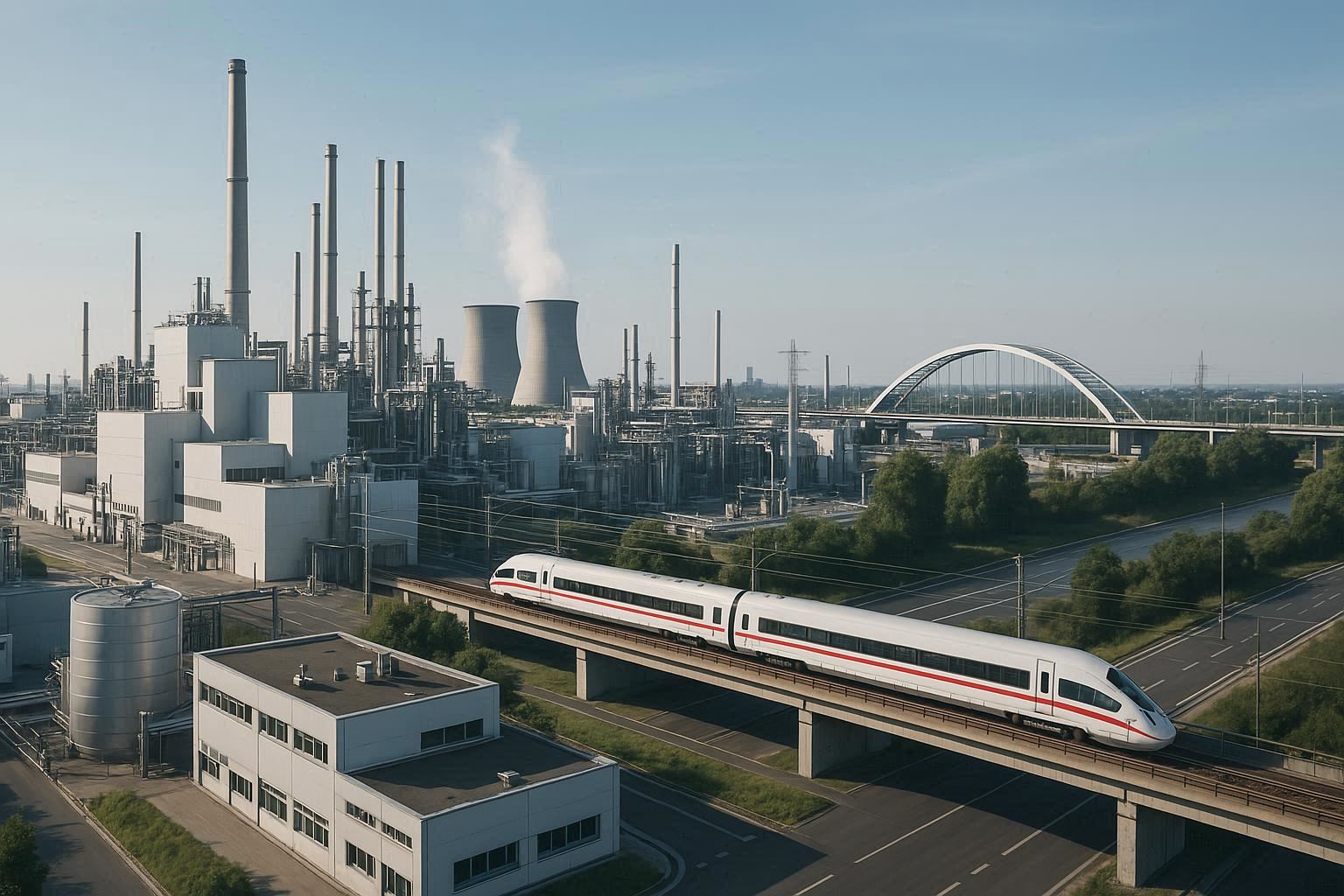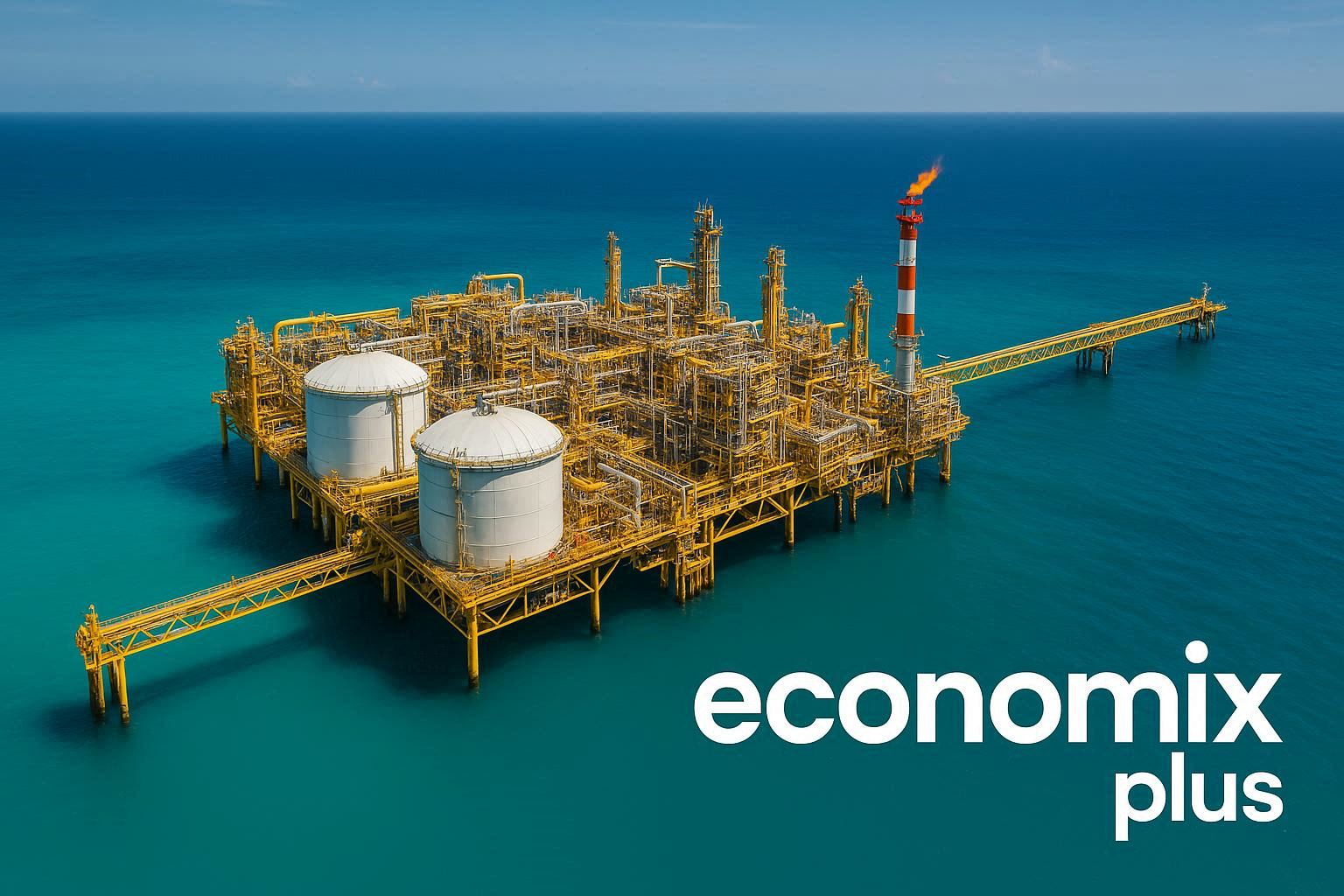Can the world meet its ambitious climate goals without a significant shift to green hydrogen? As nations recognize its crucial role in the energy transition and decarbonization efforts, the global race for supremacy in this emerging market has intensified.
The production of hydrogen using renewable energy sources is considered a key technology for achieving climate goals and transforming energy-intensive industries. With global production expected to reach over 14,000 kilotonnes by 2030, the competition between major economies like China, the European Union, and the United States is reshaping global energy markets and industrial strategies.
Key Takeaways
- The global green hydrogen market is poised for significant growth.
- Nations are investing heavily in hydrogen production and infrastructure.
- The energy transition is driving demand for green hydrogen.
- Major economies are competing to lead the hydrogen economy.
- Massive infrastructure development is required to meet production targets.
The Global State of Green Hydrogen Production
As the world shifts towards cleaner energy, green hydrogen production is becoming increasingly important. The current global production landscape is characterized by a significant gap between the existing capacity and future projections.
Current Production Levels and Future Projections
Currently, the world produces approximately 180 kilotonnes of electrolysis-based hydrogen per year. According to a Roland Berger analysis, this is expected to grow to around 110 million tonnes of green hydrogen by 2030, requiring about 345 gigawatts of electrolysis capacity worldwide. This represents a substantial increase in production capacity.
| Year | Production Level | Electrolysis Capacity |
|---|---|---|
| Current | 180 kilotonnes | N/A |
| 2030 (Projected) | 110 million tonnes | 345 gigawatts |
Why Green Hydrogen Matters for the Energy Transition
Green hydrogen is a versatile energy carrier that can decarbonize various sectors, including steel production, chemical manufacturing, and heavy transportation. It offers a solution for utilizing surplus renewable energy and balancing intermittent power sources, making it a critical component of a comprehensive energy transition strategy.
Key benefits of green hydrogen include its ability to be stored, transported, and used in multiple applications, presenting significant opportunities for industrial growth and job creation.
Leading Contenders in the Green Hydrogen Race
The green hydrogen race is heating up, with several countries vying for dominance in this emerging industry. As nations invest heavily in renewable energy and green hydrogen production, the competition is becoming increasingly fierce.
China’s Dominant Position and Strategic Advantages
China has established a commanding lead in the green hydrogen race, controlling more than 50% of global electrolysis capacity with completed final investment decisions, approximately 6.6 GW. The Chinese government has invested around $39 billion in the green hydrogen industry in 2023 alone, aiming to transition from fossil-based hydrogen to green hydrogen to support its climate goals. This significant investment has enabled China to build massive production facilities, solidifying its position as the world’s largest consumer and producer of hydrogen.
European Union’s Ambitious Plans and Policy Framework
The European Union has adopted a two-pronged approach, planning to produce 10 million tonnes of renewable hydrogen domestically while importing an additional 10 million tonnes by 2030. This ambitious plan is supported by over $18 billion in funding for important projects of common European interest. Germany, as Europe’s industrial powerhouse, aims to build 10 gigawatts of electrolysis capacity by 2030, representing 25% of Europe’s planned capacity.
United States’ Inflation Reduction Act and Hydrogen Hubs
The United States has set ambitious targets to produce 10 million tonnes of clean hydrogen annually by 2030, supported by the Inflation Reduction Act, which provides approximately $100 billion in subsidies over the next decade. The U.S. hydrogen strategy includes the development of regional hydrogen hubs and production tax credits of up to $3 per kilogram for renewable hydrogen.
Emerging Players: Saudi Arabia, India, and Spain
Saudi Arabia is constructing the world’s largest green hydrogen project, capable of producing over 200 kilotonnes annually using 4 gigawatts of solar and wind energy. India aims to achieve production capacities of at least 5 million tonnes by 2030 through its $2.1 billion Strategic Interventions for Green Hydrogen Transition program. Spain is leveraging its abundant solar and wind resources to position itself as a leading European hydrogen exporter, planning 23.3 gigawatts of electrolysis capacity to produce 2.5 million tonnes annually by 2030.
Key Factors Determining Who Wins the Green Hydrogen Race
Green hydrogen is emerging as a crucial component in the global energy transition, sparking a competitive race among nations. Several key factors will determine which countries lead in green hydrogen production.
Production Capacity and Infrastructure Development
The development of production capacity and infrastructure is fundamental to the growth of the green hydrogen economy. Countries are racing to establish gigawatt-scale electrolysis facilities connected to renewable energy sources. Infrastructure development, including production facilities, storage, transportation, and refueling stations, is crucial for market growth.
Government Support and Funding Mechanisms
Government policy frameworks and regulatory environments significantly impact development timelines. Funding mechanisms vary widely between countries, from direct subsidies and tax incentives to public-private partnerships. The United States’ production tax credit approach through the Inflation Reduction Act offers up to $3 per kilogram for green hydrogen, potentially the most generous support mechanism globally.

Technological Innovation and Cost Reduction
Technological innovation in electrolyzer efficiency, durability, and manufacturing scale remains crucial for reducing capital costs and improving operational performance. The US Department of Energy aims to reduce production costs to $1 per kilogram of green hydrogen within a decade, compared to current costs of $4-6 per kilogram.
Market Creation and Industrial Applications
Market creation through demand-side policies is essential, as industrial offtake agreements and sector-specific mandates help establish reliable revenue streams for producers. Industrial applications across steel manufacturing, chemical production, heavy transportation, and energy storage represent the primary markets for green hydrogen adoption. For more information on the current state of green hydrogen production, visit Canary Media’s article on the topic.
The interplay of these factors will ultimately determine which countries emerge as leaders in the green hydrogen race. As the world continues to transition towards cleaner energy sources, the importance of green hydrogen is likely to grow, driven by technological innovation, government support, and increasing demand from various industries.
The Future Outlook of the Green Hydrogen Economy
The green hydrogen economy is on the cusp of a significant transformation. As the world shifts towards renewable energy sources, green hydrogen is poised to play a crucial role in the global energy transition.
Key Trends and Developments
- Exponential growth in green hydrogen production is expected, reaching over 100 million tonnes per year by 2030.
- The geopolitical landscape of energy is likely to be reshaped, with new exporters and importers emerging based on renewable resource availability.
- Early leaders in the green hydrogen market will maintain competitive advantages through scaled production, reduced costs, and developed infrastructure.
As the green hydrogen economy evolves, it will drive deep decarbonization across various sectors, including steel production, chemical manufacturing, and heavy-duty transportation. Investment patterns will shift towards commercially viable large-scale deployments, attracting private capital and fostering growth in the hydrogen industry.














